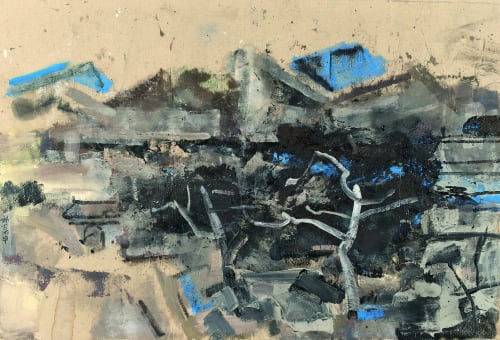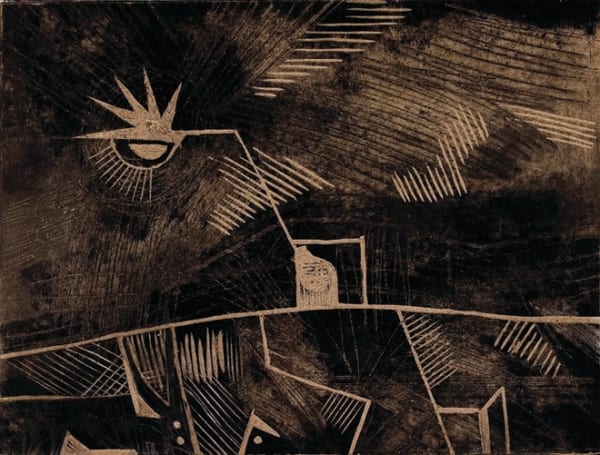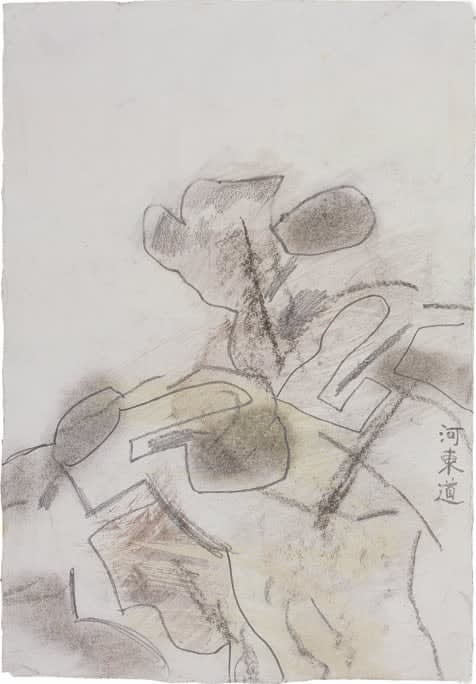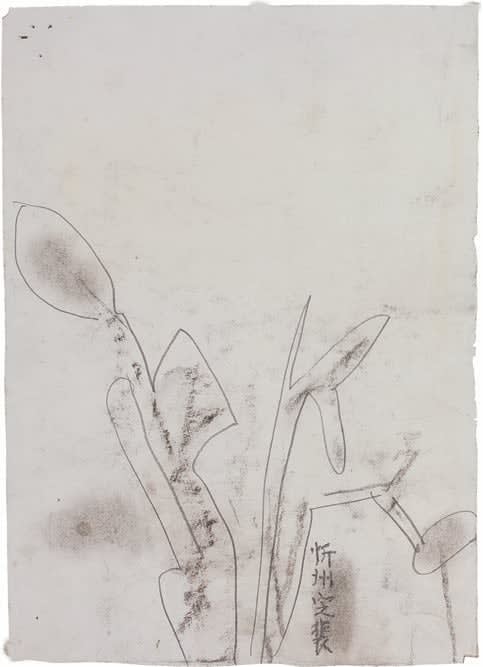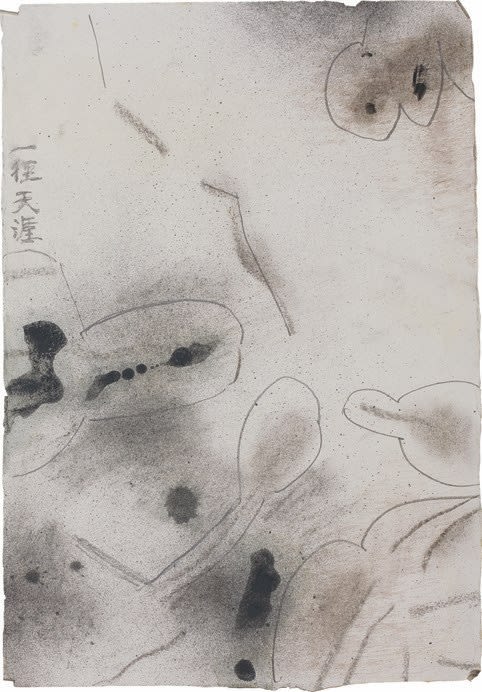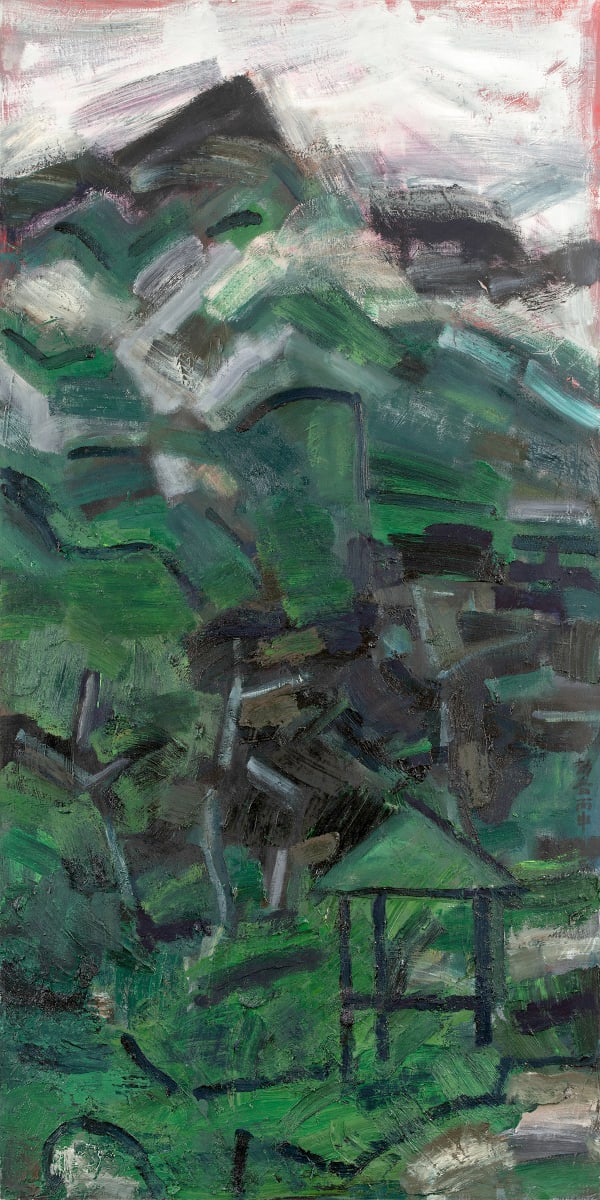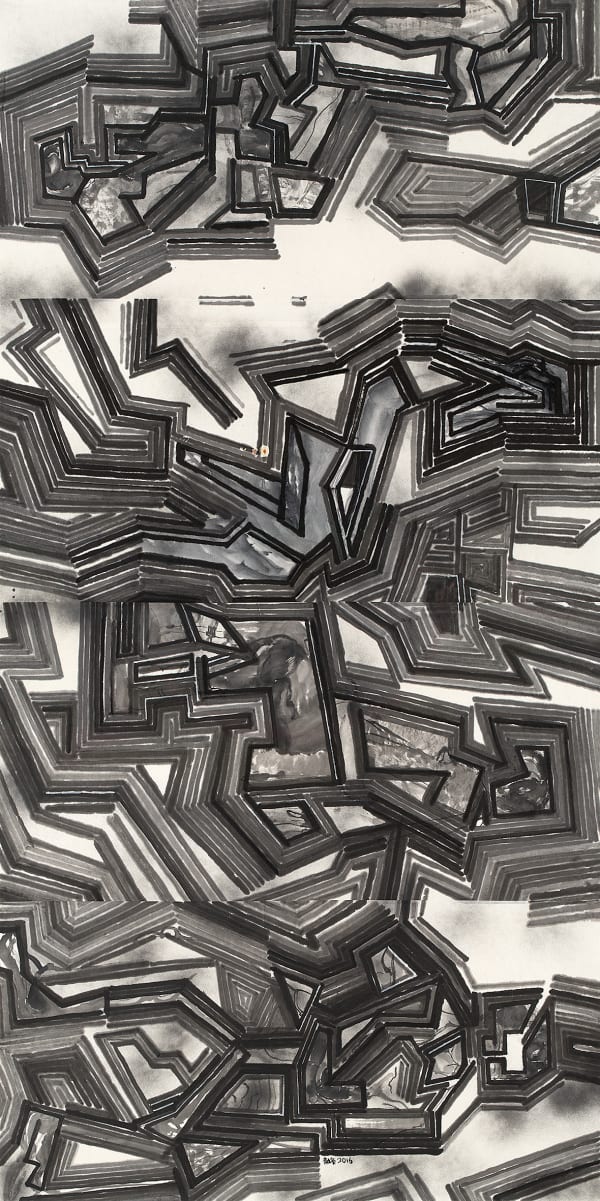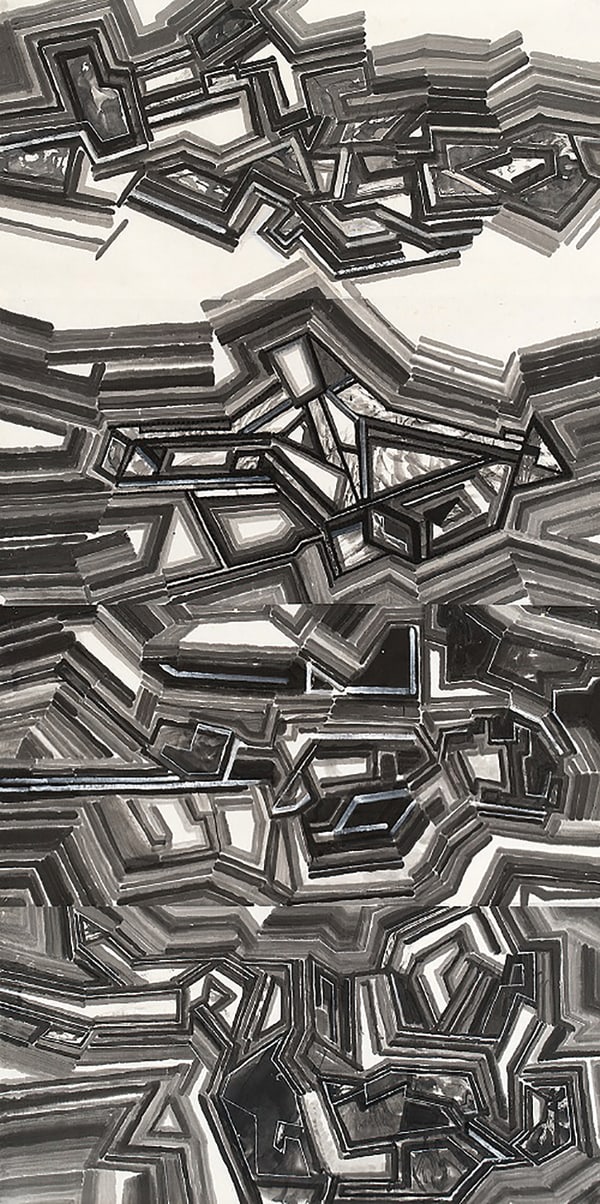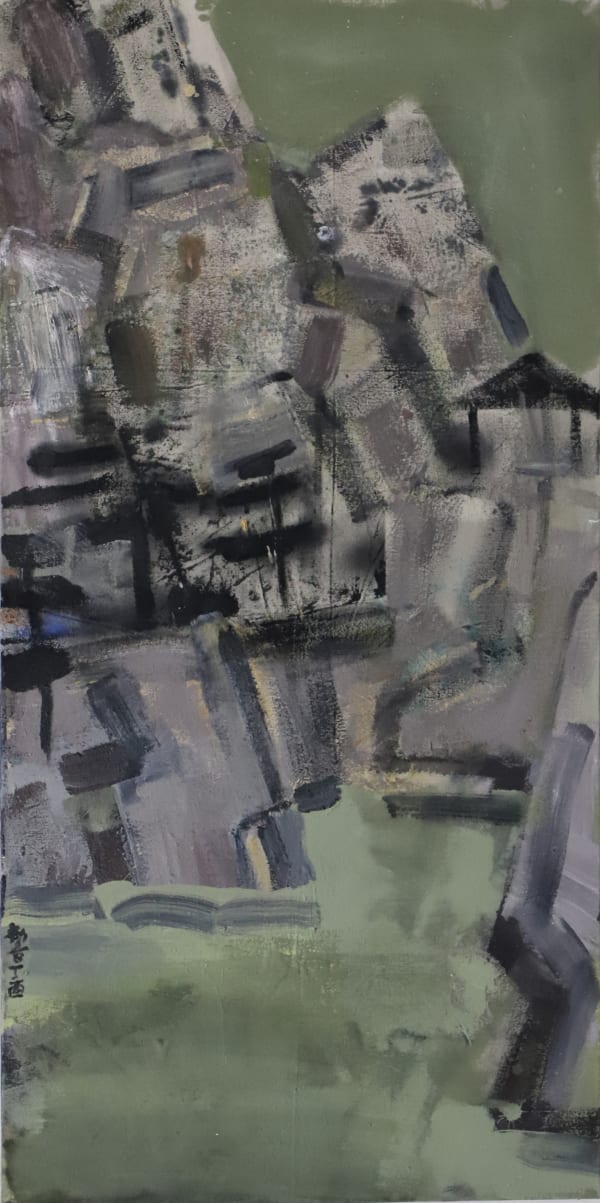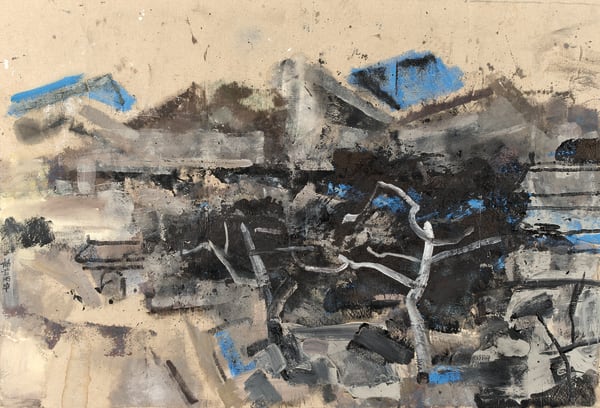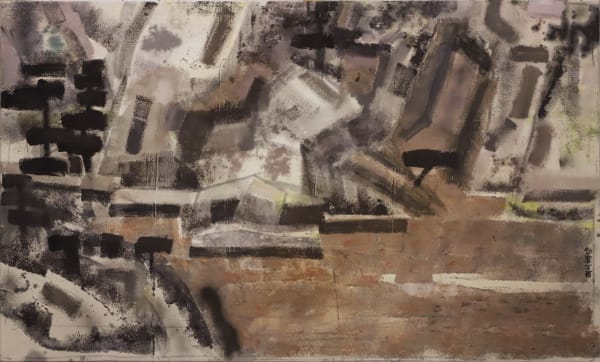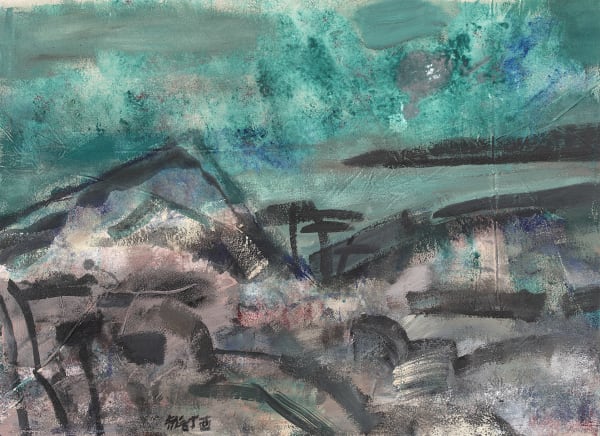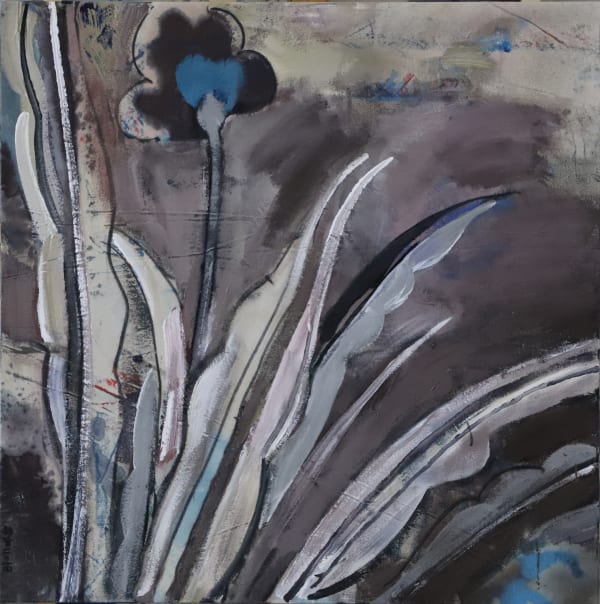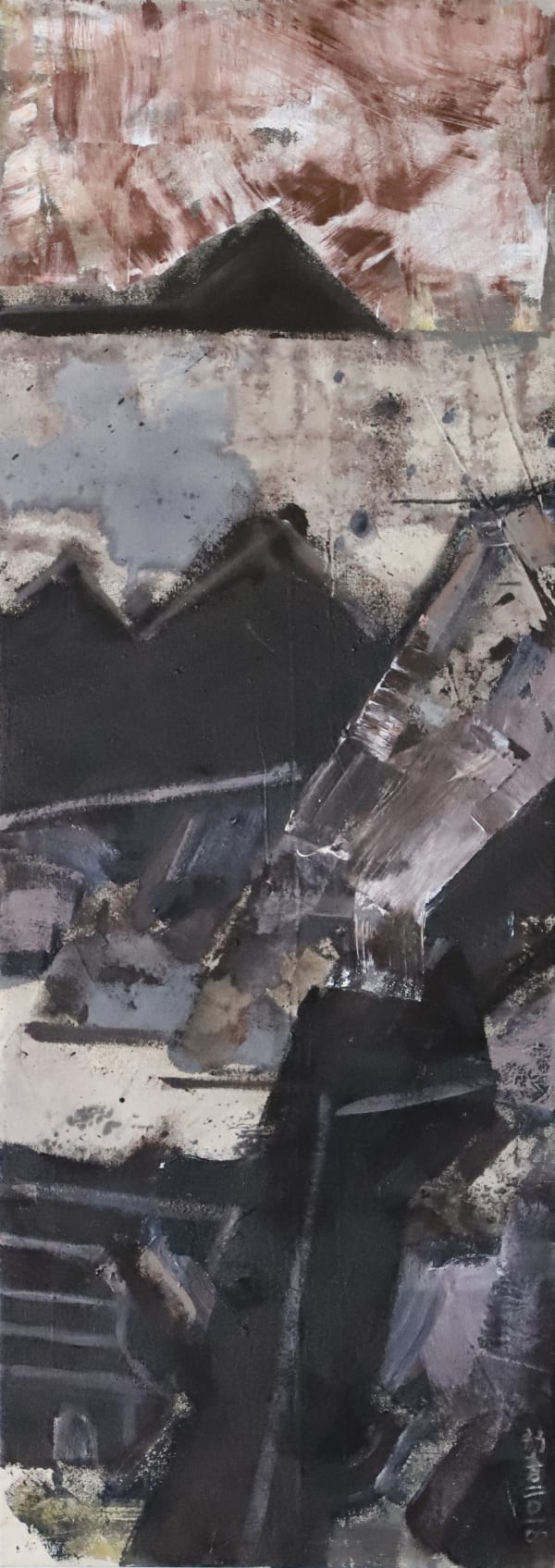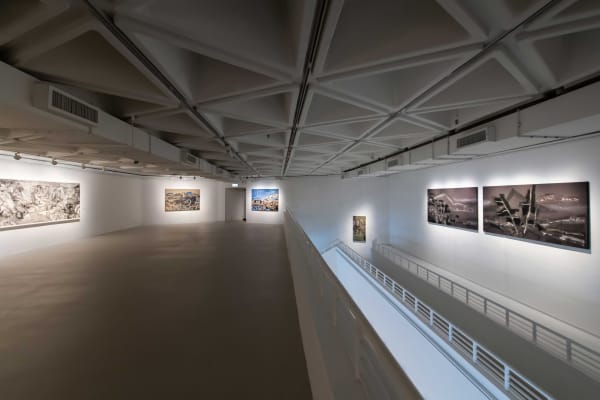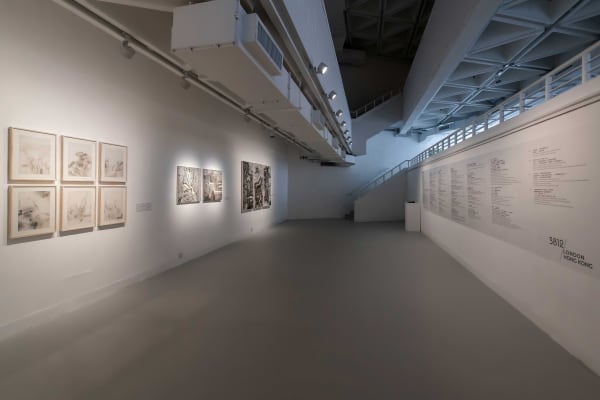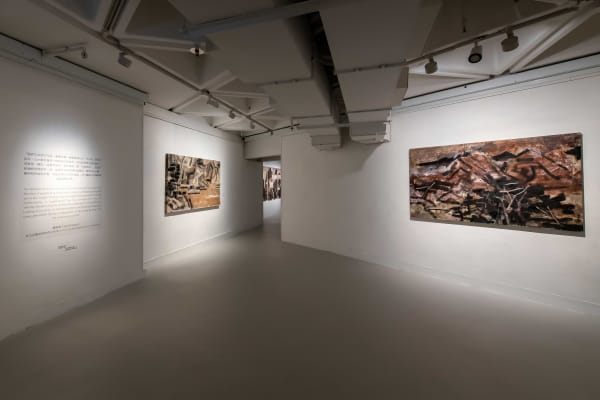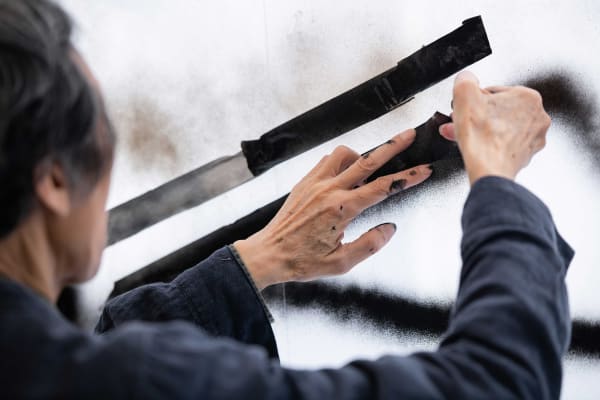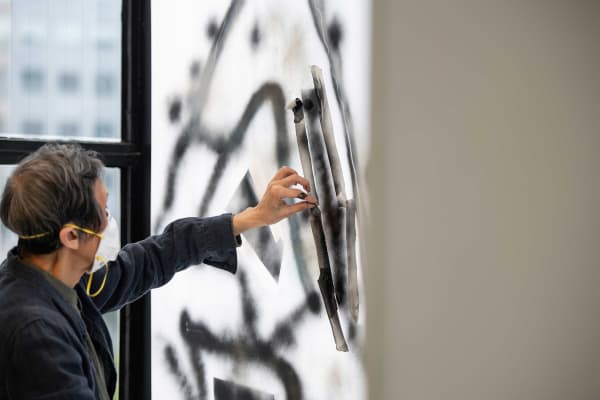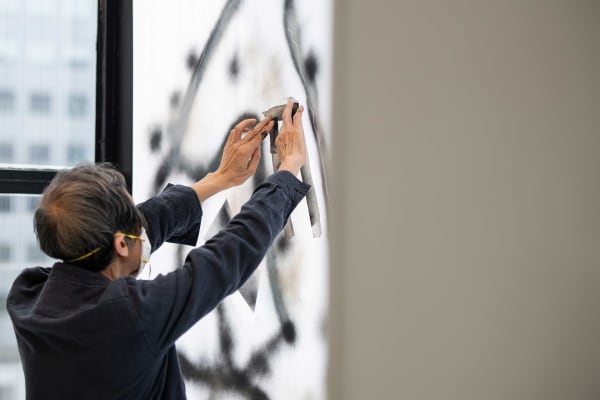Grand Landscape: Wang Jieyin: HONG KONG ARTS CENTRE, 5/F, PAO GALLERIES | 3812 HONG KONG GALLERY 3- 14/06/2019
Modern Chinese painting has gone through two phases and two generations of artists: the figurative expression represented by Huang Binhong (1865-1955) and Sanyu (1941-1966) in the first half of the 20th century, and the abstract nature represented by Zao Wou-Ki (1921-2013) and Wu Guanzhong (1919-2010) in the second half of that century. In the 21st century, Chinese painting is led by the “third generation” artists with their even wider and more original contributions. These include Wang Jieyin (b. 1941), Shang Yang (b. 1942) and Qiu Shihua (b.1940). Wang Jieyin differs from the other artists for his extraordinary contribution not only through his oil paintings but also through his ink works, especially the large sized works represented by the Grand Landscape series.
The “third generation” painters in China are more self-conscious. Aiming at “contemporary expression of Eastern spirit,” they revive the naturalness in Chinese cultural tradition. Facing the damage by industrialization in the modern age, they reconstruct a mindscape of nature through nature’s elementariness and poetic artistic state, as well as poetry of ruin and damaged nature. Wang Jieyin’s oeuvre reveals the density of dark night, remains of ruins, the bitterness of earth, traces washed by time, magic urban mazes and boundless haze of the world. It also represents remote reminiscence of forceful and vigorous literati landscape as well as tenacious and indelible traces of nature. Accepting time while resisting it—such is the internal spiritual strength and the metaphysical quality of Wang Jieyin’s painting. Damaged nature can create a condition for redeeming modernity. This precisely incarnates contemporary transformation of Eastern spirit and the value of “grandness.”
The solo exhibition of Wang Jieyin at Hong Kong Arts Centre reveals how a detached and relaxed master with great vigor remarkably contributes to the “original language” of painting, as well as his profound “great love” for nature. In repainting Cézanne and reconstructing the depth of nature, the painter finds new links between observing nature and notions of life. With his own easy and free character and ordinary plainness of painting, alongside his passion for a piece of discarded canvas or Xuan paper, his intuition for the blank parts in ancient landscape and his memory of traces of ancient murals, the artist starts from the primitive manual feeling and black and white tones of his woodprints, and revives an artistic state which is quaint, carefree, magnanimous and fantastic. Through construction with abstract dots and montage of urbanized meandering spaces, the classical vivid spirit resonance and poetic artistic state are expressed in brand new ways in our contemporary age. Through his comprehensive imagination, Wang Jieyin creates implicit tension and eternal poeticism between abstract composition and natural mist, between reminiscence of quaint images and cursive blurriness, between improvisational happenstance and dignified elegance, between carefree play and rhythmic construction, and between a sense of hardship and childlike crudeness.
Works from the Grand Landscape series adequately incarnate the “threefold grandness” in terms of their gigantic dimensions, revival of the great value of Eastern spirit and extraordinary contributions to the “original language” of painting. They convey the contemporary value of Wang Jieyin’s painting in terms of reflecting on modernity: it preserves cultural memories of the traditional landscape, reflects on the disaster and ruination brought by modern industrialization, while observing the haze of modern city. In confronting the situation of “hybrid modernity,” Wang Jieyin’s painting integrates memory of “pre-modern” landscape painting, abstract thinking and spatial superimposition of “modernity” as well as magic vision of “post-modernity,” creating his own formal language and profound reflection full of tension. Through his concern for waste and the redemptive effect brought by the reminiscence of quaint temporality, he manages to reverse our perception of life, bringing back again the aura of painting.
-
 Wang Jieyin 王劼音, Eden 1《伊甸 1》, 1994
Wang Jieyin 王劼音, Eden 1《伊甸 1》, 1994 -
 Wang Jieyin 王劼音, Eden 2《伊甸 2》, 1994
Wang Jieyin 王劼音, Eden 2《伊甸 2》, 1994 -
 Wang Jieyin 王劼音, Eden 3《伊甸 3》, 1994
Wang Jieyin 王劼音, Eden 3《伊甸 3》, 1994 -
 Wang Jieyin 王劼音, The Notes of Classical Chinese 1《古文觀止 1》, 2004
Wang Jieyin 王劼音, The Notes of Classical Chinese 1《古文觀止 1》, 2004 -
 Wang Jieyin 王劼音, The Notes of Classical Chinese 2《古文觀止 2》, 2004
Wang Jieyin 王劼音, The Notes of Classical Chinese 2《古文觀止 2》, 2004 -
 Wang Jieyin 王劼音, The Notes of Classical Chinese 6《古文觀止 6》, 2004
Wang Jieyin 王劼音, The Notes of Classical Chinese 6《古文觀止 6》, 2004 -
 Wang Jieyin 王劼音, Night scene 1《夜色一》, 2014
Wang Jieyin 王劼音, Night scene 1《夜色一》, 2014 -
 Wang Jieyin 王劼音, Long Beach《長堤》, 2015
Wang Jieyin 王劼音, Long Beach《長堤》, 2015 -
 Wang Jieyin 王劼音, Light of Dawn《晨光》, 2015
Wang Jieyin 王劼音, Light of Dawn《晨光》, 2015 -
 Wang Jieyin 王劼音, Green Pavilion《綠亭》, 2016
Wang Jieyin 王劼音, Green Pavilion《綠亭》, 2016 -
 Wang Jieyin 王劼音, Grand Landscape《大山水》, 2016
Wang Jieyin 王劼音, Grand Landscape《大山水》, 2016 -
 Wang Jieyin 王劼音, Magical Landscape A《魔幻山水A》, 2016
Wang Jieyin 王劼音, Magical Landscape A《魔幻山水A》, 2016 -
 Wang Jieyin 王劼音, Magical Landscape B《魔幻山水 B》, 2016
Wang Jieyin 王劼音, Magical Landscape B《魔幻山水 B》, 2016 -
 Wang Jieyin 王劼音, Garden《園林》, 2016
Wang Jieyin 王劼音, Garden《園林》, 2016 -
 Wang Jieyin 王劼音, Ancient Lake with Ashen Trees《古潭蒼樹》, 2017
Wang Jieyin 王劼音, Ancient Lake with Ashen Trees《古潭蒼樹》, 2017 -
 Wang Jieyin 王劼音, Dwelling 1《幽居(一)》, 2017
Wang Jieyin 王劼音, Dwelling 1《幽居(一)》, 2017 -
 Wang Jieyin 王劼音, Dwelling 2《幽居(二)》, 2017
Wang Jieyin 王劼音, Dwelling 2《幽居(二)》, 2017 -
 Wang Jieyin 王劼音, Gorge and Lake《峽谷平湖》, 2017
Wang Jieyin 王劼音, Gorge and Lake《峽谷平湖》, 2017 -
 Wang Jieyin 王劼音, Grotto Hidden in Greenery《幽岫綠意》, 2017
Wang Jieyin 王劼音, Grotto Hidden in Greenery《幽岫綠意》, 2017 -
 Wang Jieyin 王劼音, Green Skies《綠天》, 2017
Wang Jieyin 王劼音, Green Skies《綠天》, 2017 -
 Wang Jieyin 王劼音, Mountain and Forest《高山深樹》, 2017
Wang Jieyin 王劼音, Mountain and Forest《高山深樹》, 2017 -
 Wang Jieyin 王劼音, Sublimation《化境》, 2018
Wang Jieyin 王劼音, Sublimation《化境》, 2018 -
 Wang Jieyin 王劼音, The Black Pavilion《玄亭》, 2018
Wang Jieyin 王劼音, The Black Pavilion《玄亭》, 2018 -
 Wang Jieyin 王劼音, The Hollow Valley《空谷》, 2018
Wang Jieyin 王劼音, The Hollow Valley《空谷》, 2018 -
 Wang Jieyin 王劼音, Floral Phalanx《花卉方陣》, 2018
Wang Jieyin 王劼音, Floral Phalanx《花卉方陣》, 2018 -
 Wang Jieyin 王劼音, Temple in the Deep《深寺》, 2018
Wang Jieyin 王劼音, Temple in the Deep《深寺》, 2018 -
 Wang Jieyin 王劼音, Falling Mist《氤氳》, 2018
Wang Jieyin 王劼音, Falling Mist《氤氳》, 2018 -
 Wang Jieyin 王劼音, The Silhouette of Songyang Tower 1 嵩陽塔影 1, 2017
Wang Jieyin 王劼音, The Silhouette of Songyang Tower 1 嵩陽塔影 1, 2017 -
 Wang Jieyin 王劼音, Structural Landscape 1《結構山水之一》, 2018
Wang Jieyin 王劼音, Structural Landscape 1《結構山水之一》, 2018 -
 Wang Jieyin 王劼音, Structural Landscape 2《結構山水之二》 , 2018
Wang Jieyin 王劼音, Structural Landscape 2《結構山水之二》 , 2018 -
 Wang Jieyin 王劼音, Minimal Silence《簡寂》, 2018
Wang Jieyin 王劼音, Minimal Silence《簡寂》, 2018 -
 Wang Jieyin 王劼音, The Hanging Lake《悬湖》, 2018
Wang Jieyin 王劼音, The Hanging Lake《悬湖》, 2018 -
 Wang Jieyin 王劼音, Verdant《蒼潤》, 2018
Wang Jieyin 王劼音, Verdant《蒼潤》, 2018 -
 Wang Jieyin 王劼音, Xiaoshan Pinghu《蕭山平湖》, 2018
Wang Jieyin 王劼音, Xiaoshan Pinghu《蕭山平湖》, 2018
